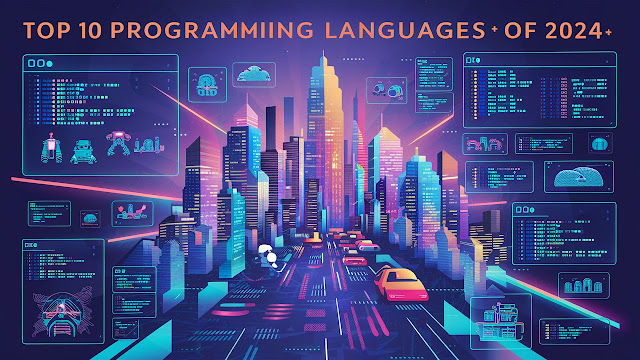"Exploring the Digital Frontier: A Glimpse into the Top 10 Programming Languages of 2024 and Their Real-World Applications"
In 2024, the programming community has seen the rise of new languages, each with its own set of practical applications. Here are 10 new programming languages and their uses:
1. **F#**: A hybrid between general and functional languages, F# is known for its simplicity and compatibility with databases, websites, and .NET entities. It's used for tasks like list processing and complex type definitions¹.
2. **Clojure**: A general-purpose language designed for concurrency, Clojure supports multiple computations simultaneously and is used in systems related to the Java Virtual Machine (JVM), making it a choice for companies like Adobe and Netflix¹.
3. **Elixir**: Originating from the Ruby community, Elixir is appreciated for its scalability and concurrency, making it a strong choice for distributed systems¹.
4. **PureScript**: A strongly-typed functional programming language that compiles to JavaScript, PureScript is used for web development and writing safer, cleaner code¹.
5. **Swift**: Apple's programming language for iOS and macOS development, Swift is known for its safety features and performance, making it a staple for app development¹.
6. **Go**: Developed by Google, Go is praised for its simplicity and efficiency, particularly in handling concurrent operations and is used in backend systems and cloud services¹.
7. **Dart**: Focused on front-end development, Dart is used for building mobile and web applications, especially with the Flutter framework for natively compiled applications¹.
8. **Apache Groovy**: A powerful language for the JVM, Apache Groovy is used for scripting, testing, and domain-specific language development¹.
9. **Java 17**: The latest version of Java, Java 17, brings new features for better performance and stability in enterprise application development¹.
10. **Crystal**: With a syntax similar to Ruby, Crystal is used for creating fast and efficient programs, benefiting from static type checking and C-like performance¹.
These languages reflect the diverse needs of the industry, from web and mobile development to distributed systems and enterprise solutions. Each language brings its own strengths to the table, offering developers new tools to build the software of tomorrow.









0 comments:
Post a Comment